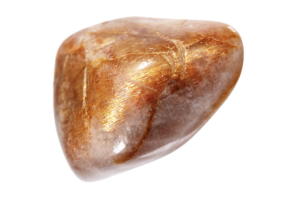USD
/
USD
/
Shipping to:
Currency:
What’s the Difference Between Jadeite and Nephrite?
Jadeite is a pyroxene mineral with the chemical formula NaAlSi₂O₆. It's well known for its wide range of vivid colors, from emerald green and lavender to pinks, blues, and reds. These hues are influenced by trace elements such as chromium and iron. With a hardness of about 6.5 to 7 on the Mohs scale, jadeite is quite durable and suitable for high-end jewelry and carvings.
Jadeite is rarer than nephrite and generally more valuable—especially the intense green variety called "Imperial Jade." Most of the world's jadeite comes from Myanmar (Burma), but it can also be found in Guatemala and Japan.
Exploring Nephrite
Nephrite is an amphibole mineral made mostly of calcium, magnesium, and iron silicate (Ca₂(Mg,Fe)₅Si₈O₂₂(OH)₂). Its color palette includes creamy whites, olive greens, grays, browns, and blacks.
Though slightly softer (6 to 6.5 on the Mohs scale), nephrite is extremely tough thanks to its fibrous crystal structure. This made it ideal for ancient tools, weapons, and ceremonial objects. Major nephrite sources include China, Canada, Russia, and New Zealand.
Key Differences Between Jadeite and Nephrite
- Chemical Makeup: Jadeite is a sodium aluminum silicate, while nephrite is a calcium magnesium iron silicate.
- Color Range: Jadeite comes in more vibrant colors, including intense greens and purples. Nephrite is more muted, with green and brown tones being common.
- Hardness and Toughness: Jadeite is harder, but nephrite is tougher and more resistant to breaking.
- Texture and Luster: Jadeite has a glass-like luster, while nephrite has an oily, waxy appearance.
- Source Locations: Jadeite is mainly found in Myanmar; nephrite is sourced from various places worldwide.
- Value: Jadeite, especially high-quality varieties, tends to be much more valuable than nephrite.
Cultural Importance
Both jadeite and nephrite have held deep cultural significance. In ancient China, nephrite was a symbol of morality, purity, and status, often used in ceremonial artifacts. During the 18th century, jadeite gained favor among Chinese royalty for its brilliant green tones.
In Central America, cultures like the Olmec and Maya prized jadeite for its association with life and fertility. Today, jade continues to play a key role in both traditional and modern jewelry.
Jade in Today’s Jewelry Market
Jade has remained a popular gemstone for its beauty and durability. Whether you're into spiritual symbolism or just love the color, jade makes for a unique choice in modern jewelry.
If you’re exploring options beyond the typical diamond, check out gemstone engagement rings for one-of-a-kind designs. For something even more distinctive, you might enjoy browsing non-traditional engagement rings for creative takes on timeless styles.
How to Tell the Difference Between Jadeite and Nephrite
Telling jadeite from nephrite can be tricky without professional tools, but here are some tips:
- Look and Feel: Jadeite tends to be more glassy and smooth, while nephrite is waxier or greasier in texture.
- Weight Test: Jadeite is denser and feels heavier than nephrite of the same size.
- Scratch Test: Both are hard, but jadeite can sometimes scratch glass while nephrite may not.
- Get it Tested: The best way to be sure is by having it tested by a gemologist.








